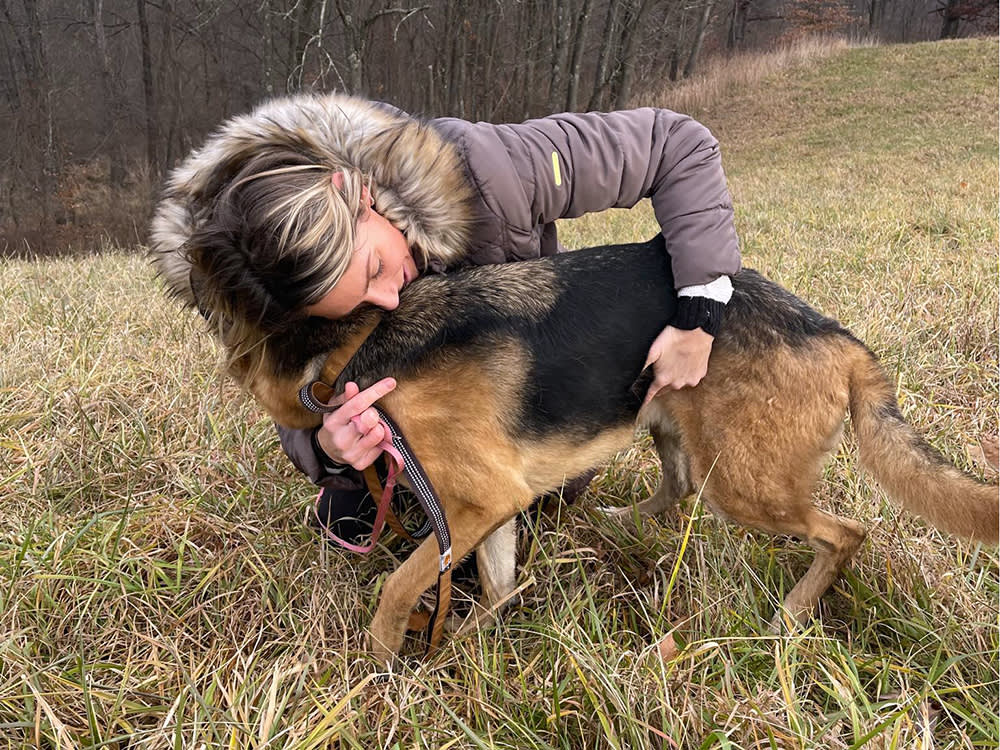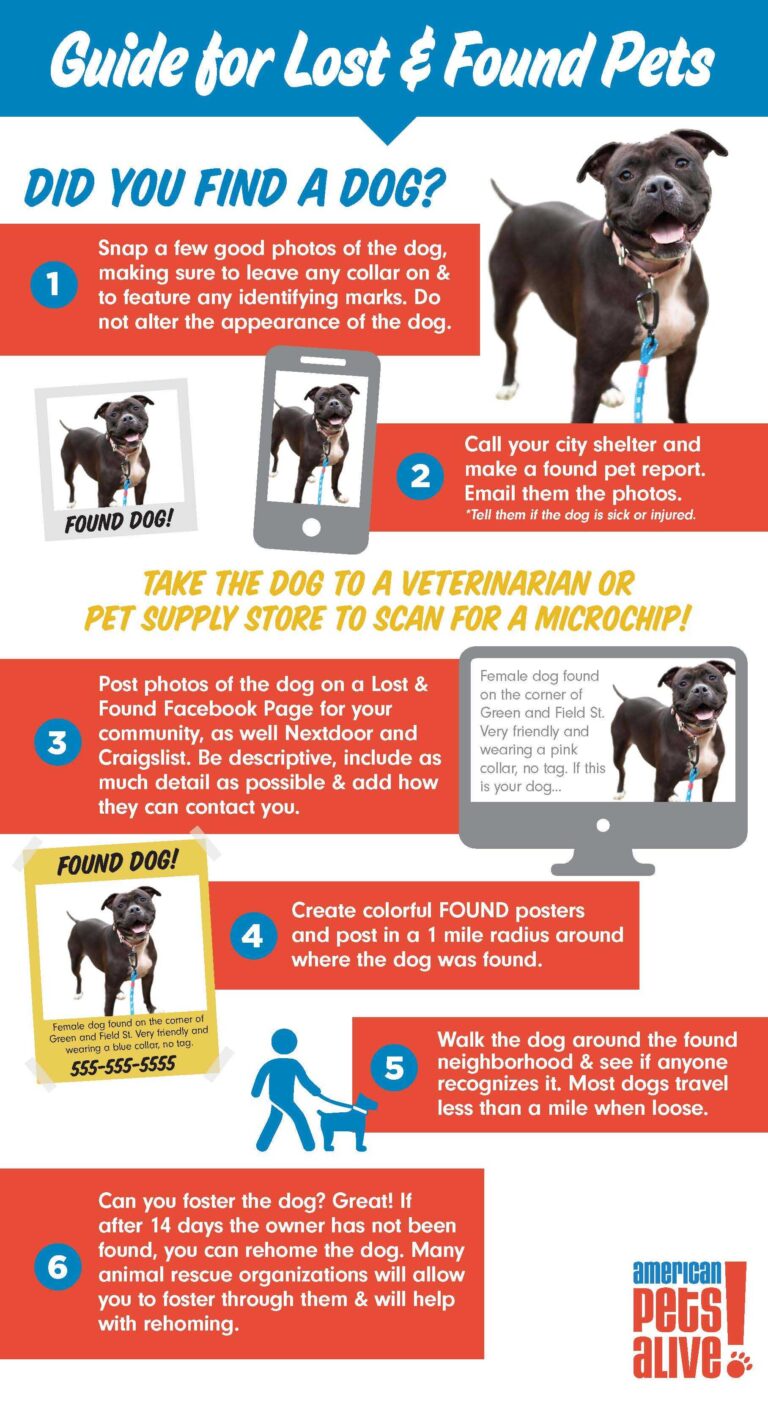When you find a lost dog, check if it is wearing a collar with the owner’s contact details. If the dog is displaying aggressive behavior, stay clear and contact the local dog warden.
Report the stray dog to the council. Contact the local dog warden immediately if the dog is not wearing any ID or you cannot safely get close to check. Finding a lost dog can be both concerning and heartwarming. You may come across a dog roaming the streets, looking lost and confused.
In such instances, it is crucial to take immediate action and ensure the dog’s safety. This article will guide you on what to do if you find a lost dog, helping you reunite it with its owner or find it a safe and suitable home. By following the right steps, you can play a crucial role in providing assistance to a dog in need and potentially reuniting it with its family. Read on to discover the appropriate actions to take when you come across a lost dog.

Credit: www.thewildest.com
1. Assess The Situation
When you stumble upon a lost dog, it can be a confusing and overwhelming situation. However, it’s crucial to remain calm and assess the situation before taking any further steps. By following these simple guidelines, you can ensure the dog’s safety and assist in reuniting them with their owner.
1.1 Check For Identification
The first step in assessing the situation is to check if the dog has any form of identification. Look for a collar with tags containing the owner’s contact details. In some cases, the dog might have a microchip, which can be scanned to retrieve important information.
1.2 Assess The Dog’s Behavior
Next, observe the dog’s behavior. Is the dog friendly and approachable, or does it display signs of fear or aggression? A friendly and approachable dog might be more willing to cooperate, making it easier to handle the situation. However, a fearful or aggressive dog requires extra caution and the involvement of professionals, such as local animal control or the dog warden.
1.3 Determine If The Dog Is Injured Or In Distress
Another crucial aspect of assessing the situation is determining whether the dog is injured or in distress. Look for any visible signs of injury, such as limping or bleeding. Additionally, observe the dog’s general behavior to identify signs of distress, such as excessive panting, whining, or restlessness.
If you notice any injuries or signs of distress, it’s important to contact a local animal shelter or veterinarian immediately. They will be able to provide necessary medical attention and ensure the dog’s well-being.
By following these steps to assess the situation, you can make informed decisions on how to proceed. Remember, every situation is unique, and it’s important to prioritize the dog’s safety and well-being throughout the process.

Credit: www.facebook.com
2. Secure The Dog
When you find a lost dog, it is important to secure the dog by checking if it has a collar or tag with the owner’s contact details. If the dog is displaying aggressive behavior, it is best to stay clear and contact the local dog warden.
Don’t forget to report the stray dog to the council.
2.1 Use A Leash Or Lure The Dog With Food
When you find a lost dog, it’s important to secure them to ensure their safety. The first method to try is using a leash. If you have one available, gently slip it onto the dog’s collar or around their neck. Slowly lead them to a safe and enclosed area. However, if you don’t have a leash, you can try luring the dog with food. Dogs are often motivated by food, so offer them a tasty treat or some of their favorite food to gain their trust. Be patient, and make sure to allow the dog to approach you willingly.
2.2 Safely Transport The Dog
Once you have secured the dog, the next step is to transport them to a safe location. If the dog is small and can fit comfortably in your vehicle, you can carefully lift them and place them in the car. Remember to secure them with a seatbelt or use a pet carrier for their safety during the journey. However, if the dog is larger or you don’t have a vehicle, consider contacting your local animal control or a nearby animal shelter for assistance. They will have the necessary equipment to safely transport the dog to a secure facility.
2.3 Provide A Temporary Safe Space
While you wait for further instructions or assistance, it’s important to provide the lost dog with a temporary safe space. This area should be secure and free from any potential hazards. If you have a backyard with a secure fence, you can create an enclosed space for the dog to roam. Ensure there are no escape routes or dangerous objects nearby. If you don’t have access to a backyard, you can use a spare room in your home or a bathroom with the door closed. Provide the dog with fresh water, a comfortable bed or blanket, and some toys to keep them occupied.
3. Take Steps To Reunite The Dog With Its Owner
When you find a lost dog, one of the steps you can take is to check if the dog is wearing a collar or tag with the owner’s contact details. If not, it’s important to contact the local dog warden or animal control to report the stray dog and increase the chances of reuniting them with their owner.
3.1 Check For A Microchip
When you find a lost dog, the first thing you should do is check for a microchip. Microchips are small electronic devices implanted under the skin that contain the owner’s contact information. To check for a microchip, take the dog to a local veterinary clinic or animal shelter. They will use a scanner to check if the dog has a microchip. If a microchip is found, contact the microchip registry to get the owner’s information. This is a crucial step in reuniting the dog with its owner.3.2 Create And Share Lost Dog Posters
Creating and sharing lost dog posters is an effective way to spread the word about the found dog. Include a clear photo of the dog, a description of its breed, size, and any distinctive features, as well as your contact information. Post the flyers in your neighborhood, at local community centers, pet stores, and veterinary clinics. You can also share the information on social media platforms and local lost and found pet groups. The more people who see the posters, the higher the chances of finding the owner.| Tips for Creating Lost Dog Posters: |
|---|
|
|
|
|
|
|
3.3 Contact Local Shelters, Rescue Organizations, And Veterinary Clinics
Contacting local shelters, rescue organizations, and veterinary clinics can greatly assist in reuniting the dog with its owner. These organizations often have databases and networks that can help spread the word about the found dog. Provide them with the dog’s description, any identifying information, and your contact information. They can also check their records to see if any lost dog reports match the dog you found. Putting the word out to these organizations increases the chances of finding the owner quickly. Remember, taking steps to reunite a lost dog with its owner is a responsible and compassionate act. By checking for a microchip, creating and sharing lost dog posters, and contacting local shelters and organizations, you are giving the dog the best chance of being reunited with its owner.
Credit: www.npr.org
Frequently Asked Questions Of What To Do When You Find A Lost Dog
What To Do With Found Dog Austin?
If you find a lost dog in Austin, check if it has a collar or tag with the owner’s contact details. Stay clear if it’s aggressive and contact the local dog warden or council to report it.
What To Do If You Find A Dog On The Street?
If you find a dog on the street: 1. Check for a collar or tag with the owner’s contact details. 2. Stay clear if the dog is behaving aggressively and contact the local dog warden. 3. Report the stray dog to the council.
4. If it’s at night, contact the local dog warden. 5. You can also take the dog to the nearest vet clinic or fire station to have it scanned for a microchip.
What To Do If You Find A Stray Dog At Night?
If you find a stray dog at night, check if it has a collar or tag with the owner’s contact details. If the dog is aggressive, stay away and contact the local dog warden. Report the stray dog to your local council and arrange for them to collect it.
What Are Tips For Finding Lost Dog?
To find a lost dog, check your neighborhood, post flyers, offer a reward, and ask neighbors and delivery drivers for sightings. Report stray dogs to the local dog warden and provide a description. Always approach stray dogs slowly and calmly.
Conclusion
If you find a lost dog, it’s important to take immediate action to ensure their safety and wellbeing. Check for a collar or tag with the owner’s contact details and contact them if possible. If the dog is displaying aggressive behavior, stay clear and contact the local dog warden.
Report the stray dog to the council and provide as much information as possible. Remember to approach stray animals slowly and calmly, using a gentle voice. Taking these steps can help reunite a lost dog with their owner and ensure they receive the care they need.



